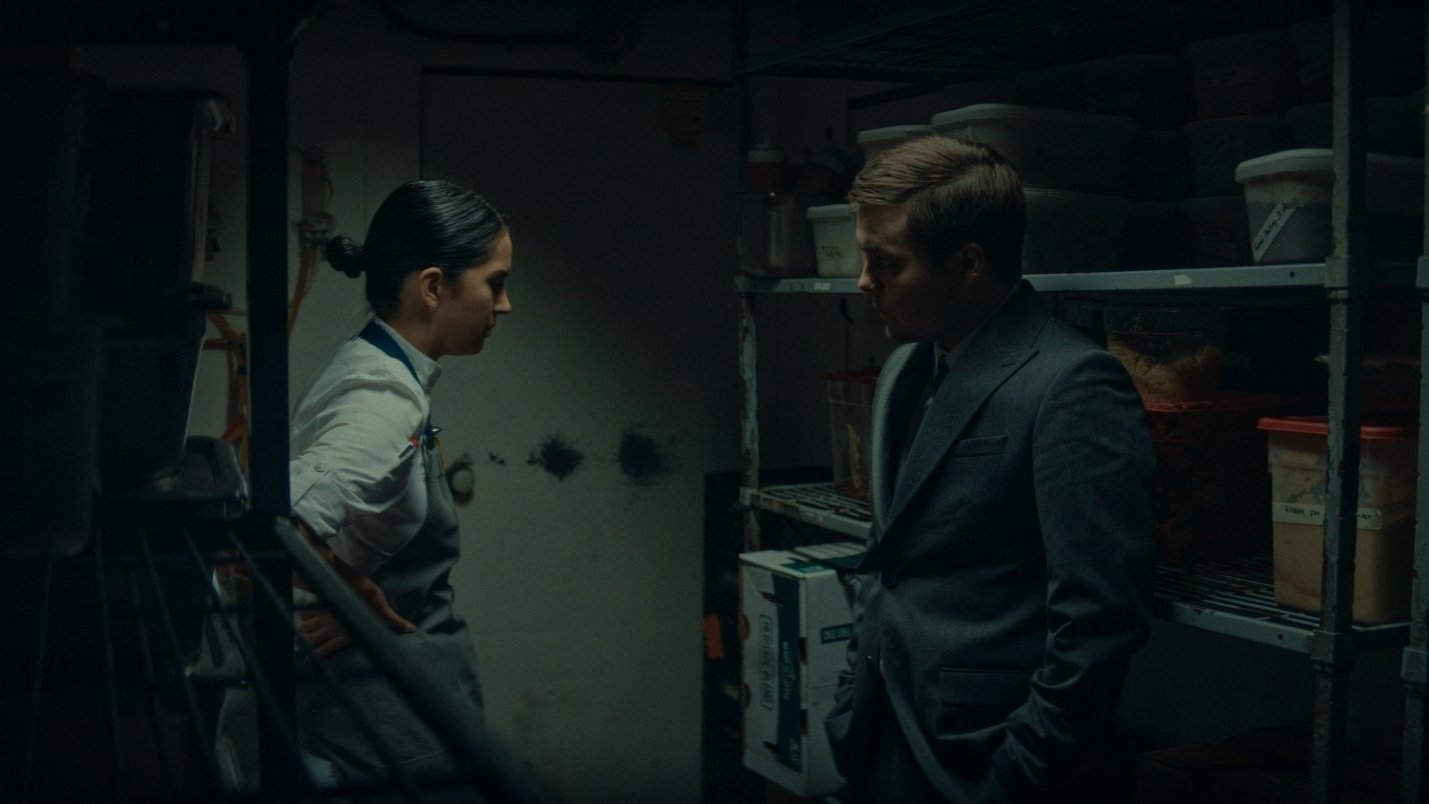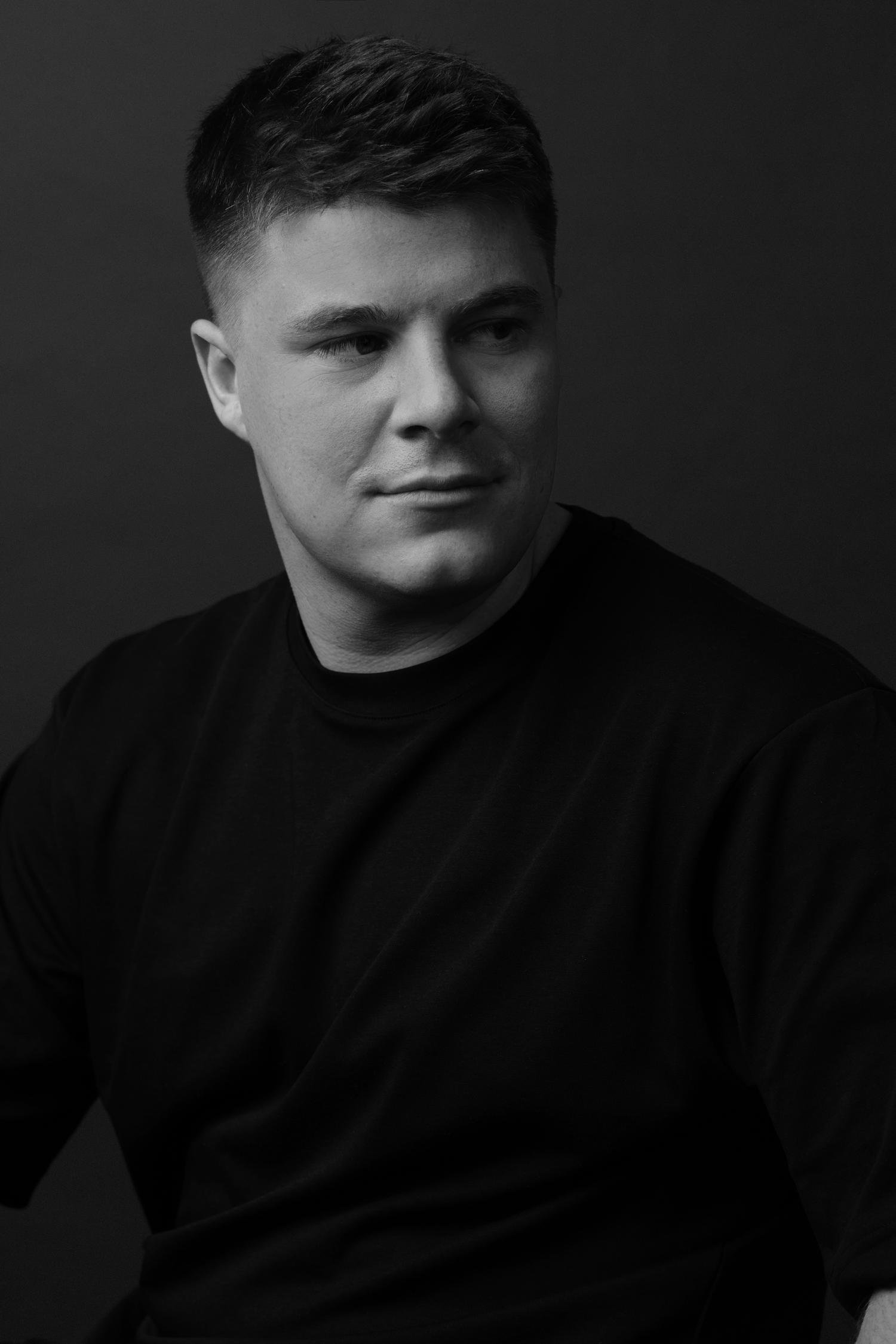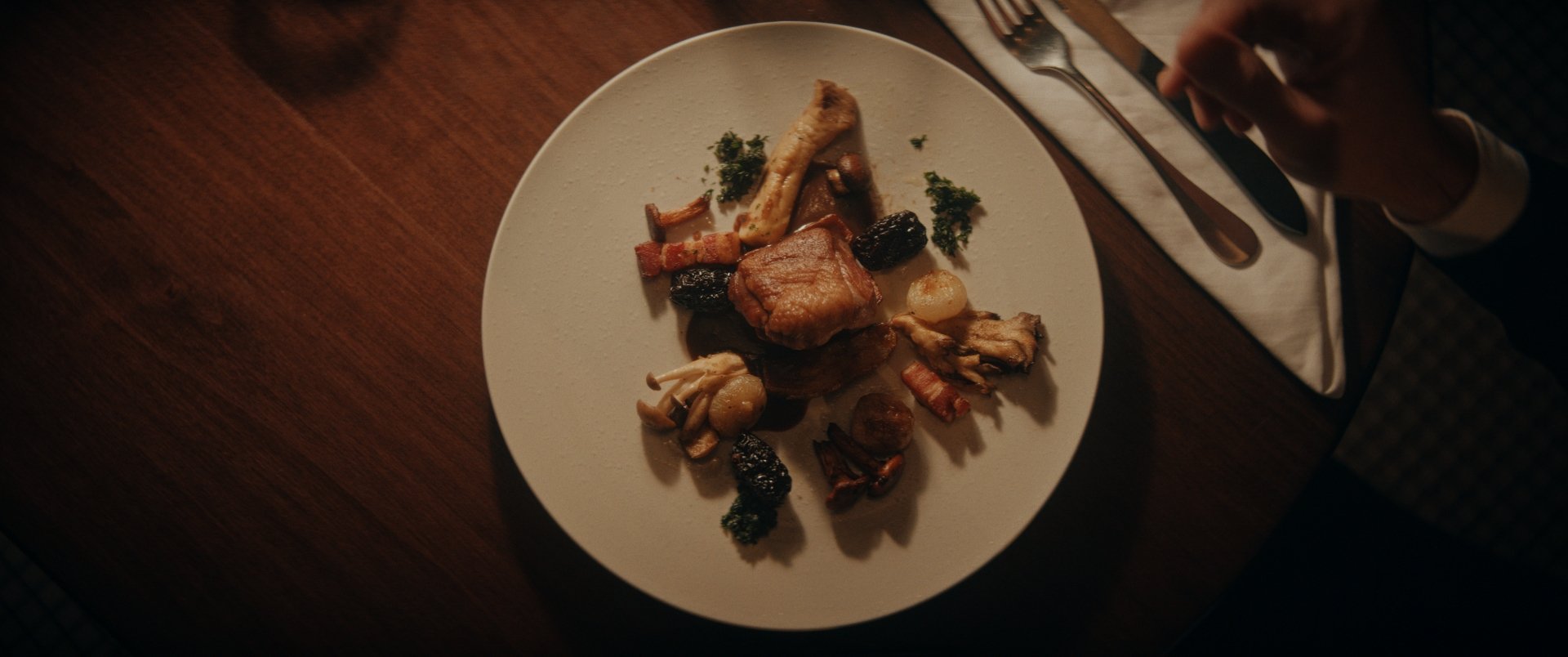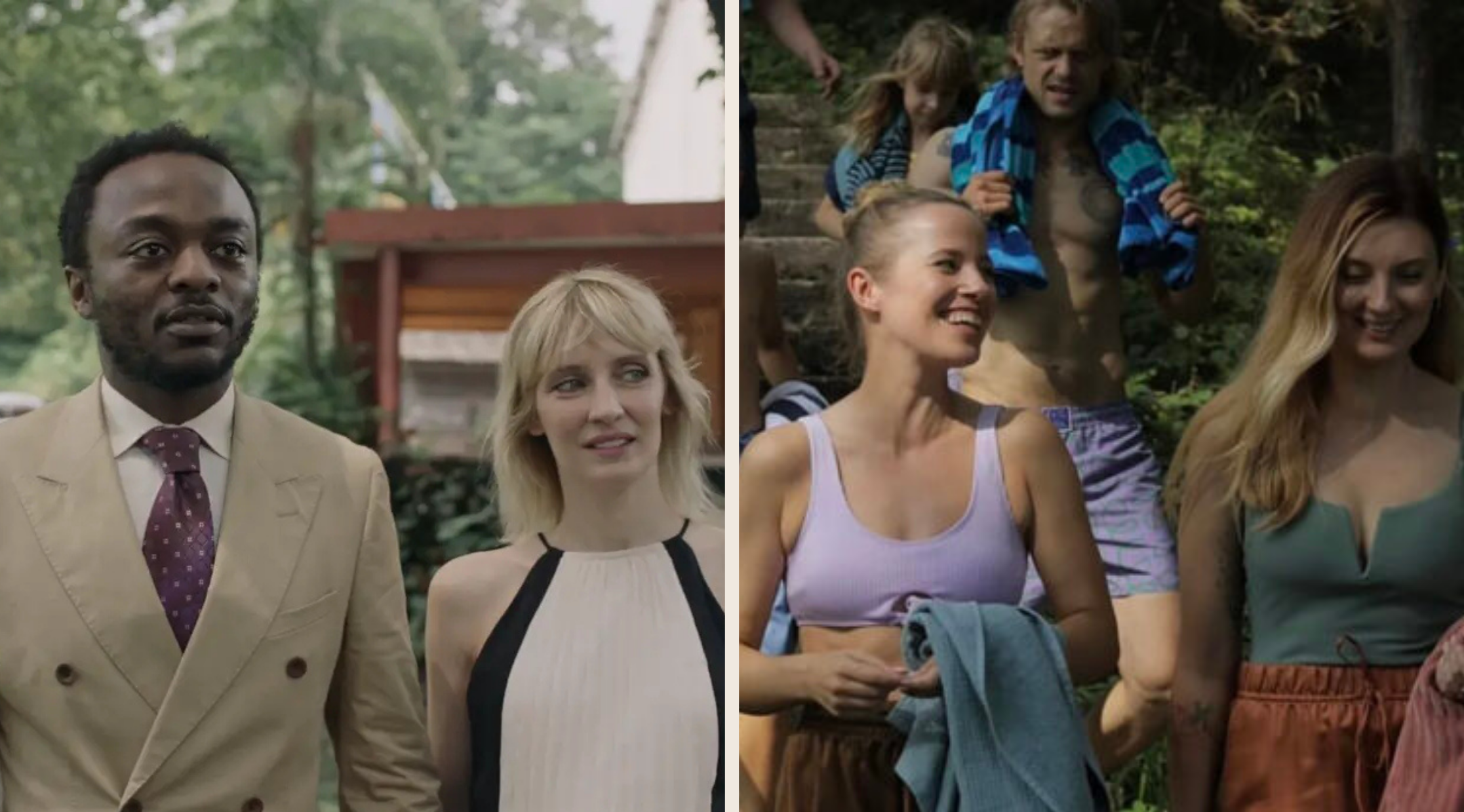Stir Q&A: VIFF short Master of the House calls Michelin-star restaurant Kissa Tanto its backdrop
Director Dylan Maranda talks chaotic cinematography, family history, and meeting chef Joël Watanabe for his food-critic-centred narrative
Master of the House.
The Vancouver International Film Festival screens Master of the House as part of VIFF Short Forum: Program 1 at Vancity Theatre on September 29 at 9 pm, and at International Village on October 1 at 2:45 pm
BY NOW, MOST Vancouverites are familiar with Kissa Tanto, the Italian-Japanese fusion restaurant tucked inconspicuously away in Chinatown that garnered itself a Michelin star last fall during selections for Vancouver’s first-ever MICHELIN guide.
The mid-century-modern locale has become the backdrop for director Dylan Maranda’s sizzling new short Master of the House, making its world premiere at VIFF this week. Shadow-shrouded, moody, and chaotic, the film chronicles a young sommelier who works at Reclamation, a restaurant that reinvents Indigenous cuisine, as he tries to impress a respected critic.
The intense atmosphere created throughout owes much of its credit to Kissa Tanto’s deep teal walls, regal red accents, dark wooden fixtures, and shiny brass details. The 1960s Tokyo-jazz-café feel, replete with a glossy coved ceiling and vinyl record stacks, is designed by Vancouver-based studio Ste. Marie (the minds behind plenty of other Vancouver food scene mainstays, from Ask for Luigi to Como Taperia).
An award-winning commercial director, Maranda marks his narrative debut with Master of the House. The film draws upon many of his personal experiences as someone who grew up immersed in restaurant culture.
Stir caught up with Maranda before the premiere to chat about landing Kissa Tanto, his parents’ culinary background, the Indigenous cuisine in the film, and more.
With Master of the House filmed on location at Kissa Tanto in Vancouver, can you explain how you first met the restaurant’s head chef Joël Watanabe, and how the film ended up being shot there?
Dylan Maranda.
Chef Joël and I originally met years ago after he starred in a Uniqlo ad that I directed and we filmed him cooking in Kissa Tanto. We had a good rapport, and we talked about my father’s culinary background, and that I had worked in restaurants to pay my way through film school.
For many years, the room at Kissa Tanto had always been an inspiration for the film in my mind. The furnishing, the lighting, even the semi-reflective paint they use on the ceiling to bounce light, were all inspiring to me. Never in my wildest dreams did I think it would be available to us—but after some difficulty with more conventional routes of scouting locations, I decided to walk in and have a drink at the bar. After a couple amazing cocktails from Fraser, the bar manager, I worked up the courage to ask if Chef Joël was on the line that night. He came out to the bar, we had a quick catch-up, and I tried to explain as quick as I could what we were hoping to achieve, how limited we were on budget, and that we wouldn’t be a bother if he let us shoot there. After agreeing we could shoot for a total of two days (with them being closed on Monday and Tuesday), the rest was history.
How did your father’s background as head chef and cofounder of Calhoun’s influence the plot and intensity in Master of the House? Are there any moments in the film based upon real-life events either of you experienced?
It was based a bit on my father’s experiences with some of my own experiences. Before Calhoun’s, my mom and dad both worked in the fast-paced fine dining world in Toronto—so some of those stories really stuck with me growing up. I also had my home in restaurants to draw from as a front-of-house worker for several years. As anyone who has worked in a restaurant can attest, you come across a lot of characters. The heat, the chaos, the stress, and the intensity can be riveting. However, it was always the people and what they were willing to sacrifice in pursuit of something greater than themselves that kept me enthralled.
Almost all of the characters in the film are based off of my own relationships. Who and how exactly are probably best kept a secret, but it’s not just me! There’re a myriad of contributors to different aspects of the story that really flesh out the backstory of each character. I want to give a really big shoutout to Chef Stephanie Noel, who lended incredible context and stories about what it was like working as a sous-chef in a two-Michelin Star restaurant in France; which provided the basis for Elizabeth’s backstory.
Master of the House.
With the restaurant depicted in the film, Reclamation, being a place that reinvents Indigenous cuisine, were there any new dishes created specifically for Master of the House, or were they based off an existing restaurant or concept? Did Chef Joël cook any of the dishes shown?
With Reclamation being a fictional place, I thought it best to try and formulate the dishes from scratch. The idea of the menu made sense to me once the backstory of Elizabeth fell into place—that she was combining her technique and success in the French fine-dining world with traditionally Indigenous ingredients. With that as the thesis, I spent a lot of time researching what were “hero” ingredients to different areas and Indigenous peoples of the West Coast, and used those as starting points.
Because I wanted to keep the world of the film rooted in fiction, I never wanted to really place where we were, but the West Coast became the canvas due to my own knowledge of the terroir. Dishes like blue grouse, fowl combined with a French dish of Coq au Vin, and Olympia oysters (being one of the only native species to the West Coast), and more were inspirations for the film. All of these were then passed through different chefs in my circle to “okay” the dishes, to make sure I didn’t make any glaring errors in description or technique. After that, I did the fictional wine program like I would if I was doing my old job of wine programming!
The dishes were originally going to be cooked and styled by Chef Billy Nguyen, but they came down with COVID days before the shoot. So lo and behold, my dad was convinced at three days’ notice to come out of retirement to cook and style the dishes. The guy with the big beard in the film, that’s him!
How does the film’s soundtrack and cinematography, including lighting and camera shots, play into the mood of chaos and pressure that’s created throughout?
Bryn McCashin [director of photography] and his team did an unbelievable job at creating the mood and the world for the restaurant. Bryn and I decided early on that we would have two “camera languages” for the space. Inside the kitchen, it’s all handheld—fast and quick movements to accentuate the chaos of the kitchen. But in the dining room, there’s always a finesse to the movement—almost like a dance. For those shots, everything is on the tripod or Steadicam. Combined with the incredible colour work by Sam Gilling, that makes for a final visual language that continues to take my breath away.
Ben Frost is responsible for the incredible score. I always knew the score would be some sort of avant-garde jazz, as I feel it perfectly represents the chaos but also harmony of the dining world, but that’s easy to say and hard to execute. Ben was an old classmate of mine at Byng Arts, and I knew even then he was going to be a jazz phenom. Once he agreed to score the film, there was lots of discussion back and forth nailing down the style that we wanted to approach the film with, which was a ton of fun.
Once he had the sheet music, he assembled a team of some of the best young jazz players in the city to record a session at Monarch Studios in Vancouver. The entire score was played live and in sync to a muted version of the film with all the players assembled in one room. Getting to listen to them all day and watch audio engineer David Sikula work was one of the highlights of the whole film—probably because I just got to watch in awe and not do anything!
Coming from a successful commercial-director background, how did working on narrative in Master of the House differ from other projects you have created in the past?
Narrative is definitely a bit of a different beast than commercial directing, although my years of directing commercials definitely set me up for success when it came to things like logistics and the technicalities of production. My background was originally in acting, though, so I knew a bit about what I was getting into.
I would say the biggest risk that Bryn, our producer Spencer Foley, and I took—because we had a short hand from working with each other in the commercial world—was the pace at which we shot. We had a two-and-a-half-day shooting schedule for the film, with 20 pages of script across 13 distinct scenes to shoot. To give context, a “healthy” amount of pages to shoot in a day for a large film might be between two to five, and we were averaging at eight. It left very little room for error, and really forced the actors to get into the groove early and nail takes with not a lot of working time. This is a testament to all of them for bringing their absolute A-game and making my co-writer Nick Balaz and my dialogue work.
Given that this is a film deeply entwined with your own life experiences, how has it felt seeing it come to life on the big screen?
That’s a great question. ‘Cathartic’ is the first word that jumps to mind. It’s been almost eight years since I have made a narrative piece, but telling stories is the whole reason I got into this business in the first place. There’s definitely a release from all the built-up excitement of getting to make a narrative film again. Though with that comes a lot of anxiety around wanting to do my collaborators proud, and realizing how lucky I am to be able to make a film like this in the first place, and not wanting to mess up if this is my last chance to make something for a while.
For me, there is this overwhelming sense of fulfillment from having the chance to get back to the heart of why I wanted to be a filmmaker in the first place. I always wanted to tell stories that really make you think about your place in this world by transporting you to a different one. I think through all the amazing contributions of everyone who worked on this film, we achieved that. So, I would also say that I am incredibly thankful to all of them for making it possible, and to all of those that watch the film.















